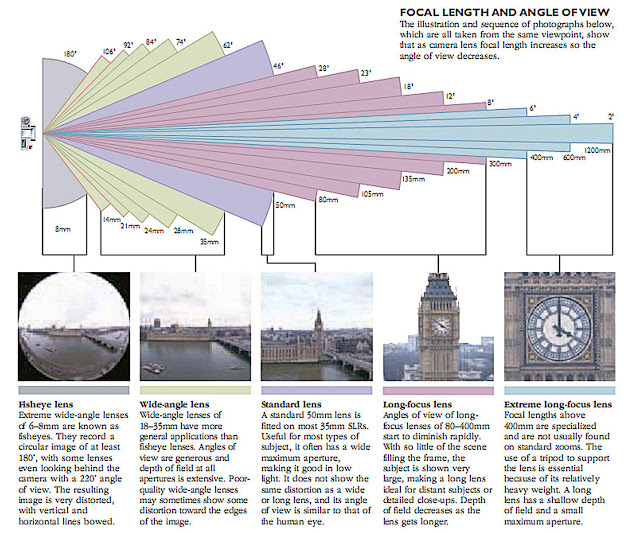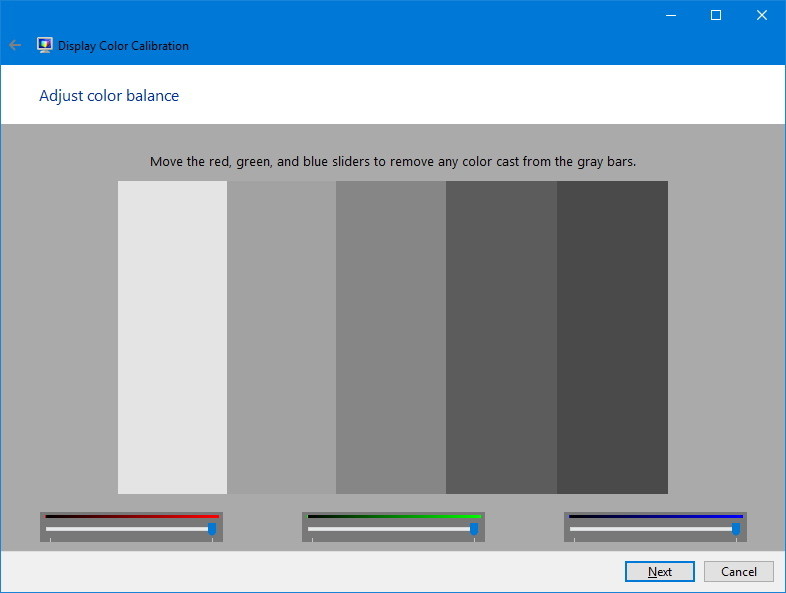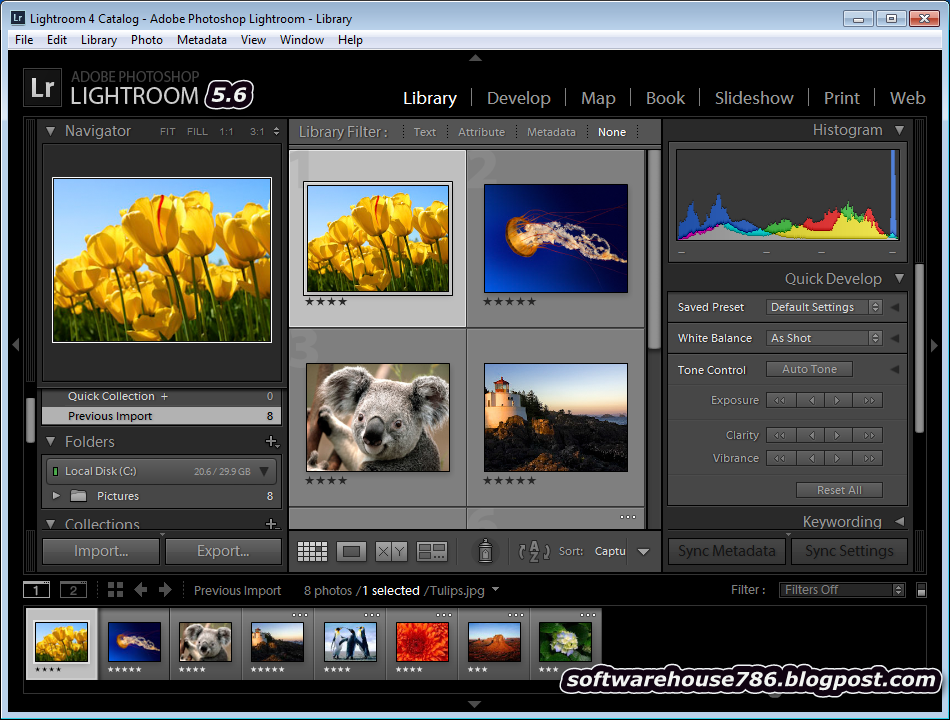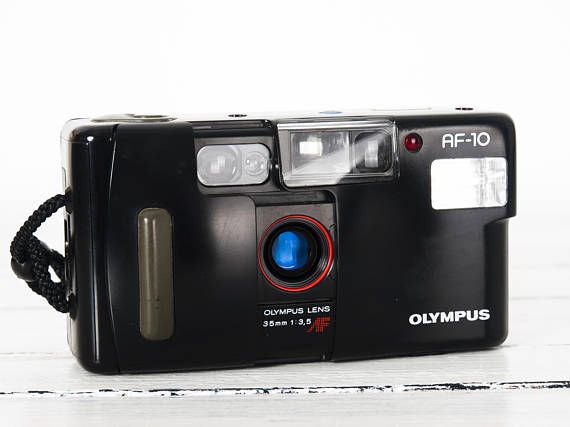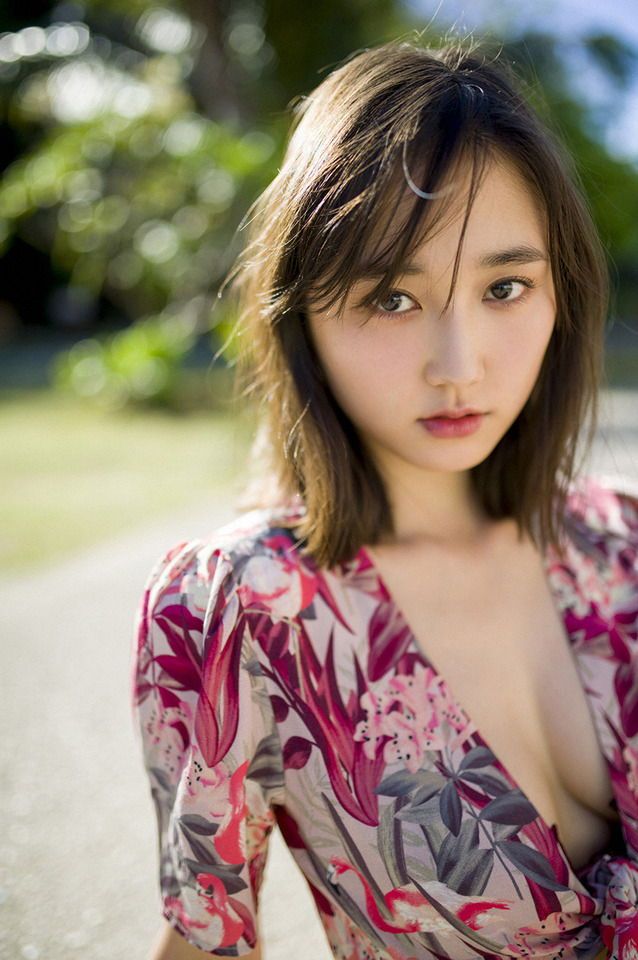Changing focal length
Nikon | Imaging Products | DSLR Camera Basics
- An AF-S DX NIKKOR 18–55 mm
f/3.5–5.6G VR lens
The focal length of the lens is the distance between the lens and the image sensor when the subject is in focus, usually stated in millimeters (e.g., 28 mm, 50 mm, or 100 mm). In the case of zoom lenses, both the minimum and maximum focal lengths are stated, for example 18–55 mm.
The angle of view is the visible extent of the scene captured by the image sensor, stated as an angle. Wide angle of views capture greater areas, small angles smaller areas. Changing the focal length changes the angle of view. The shorter the focal length (e.g. 18 mm), the wider the angle of view and the greater the area captured. The longer the focal length (e.g. 55 mm), the smaller the angle and the larger the subject appears to be.
Lens with a short focal length (wide angle of view)
To view this content, JavaScript must be enabled, and you need the latest version of the Adobe Flash Player.
- ※The illustration is an artist's conception.
Lens with a long focal length (small picture angle)
To view this content, JavaScript must be enabled, and you need the latest version of the Adobe Flash Player.
- ※The illustration is an artist's conception.
Lenses with a wide picture angle are referred to as wide-angle lenses, lenses with a small picture angle as telephoto lenses.
Lens |
Picture angle |
Focal length |
Area captured |
Apparent size |
|---|---|---|---|---|
Wide angle |
Wide |
Short |
Large |
Small |
Telephoto |
Small |
Long |
Small |
Large |
A zoom lens with a focal length of 18–55 mm offers the widest picture angle at 18 mm and the smallest picture angle at 55 mm.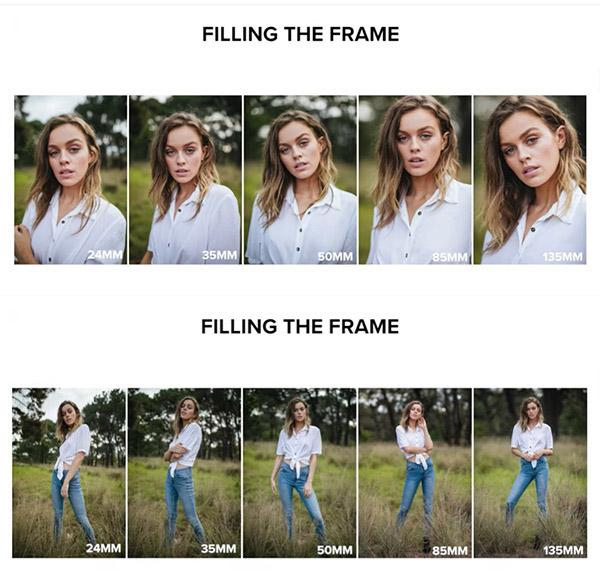 If the only lens available is an 18–55 mm zoom lens but you want wider angles—say, for landscape shots—you should buy a lens that offers focal lengths shorter than 18 mm, for example, a 10–24 mm lens. If, on the other hand, you want to photograph at greater distances, you should choose a lens that offers focal lengths longer than 55 mm, for example 55–200 mm.
If the only lens available is an 18–55 mm zoom lens but you want wider angles—say, for landscape shots—you should buy a lens that offers focal lengths shorter than 18 mm, for example, a 10–24 mm lens. If, on the other hand, you want to photograph at greater distances, you should choose a lens that offers focal lengths longer than 55 mm, for example 55–200 mm.
Picture angle
- Focal length: 12 mm
- Focal length: 24 mm
- Focal length: 50 mm
- Focal length: 70 mm
- Focal length: 135 mm
- Focal length: 200 mm
The shorter the focal length, the greater the extent of the scene captured by the lens. On the other hand, the longer the focal length, the smaller the extent captured by the lens. If the same subject is photographed from the same distance, its apparent size will decrease as the focal length gets shorter and increase as the focal length gets longer.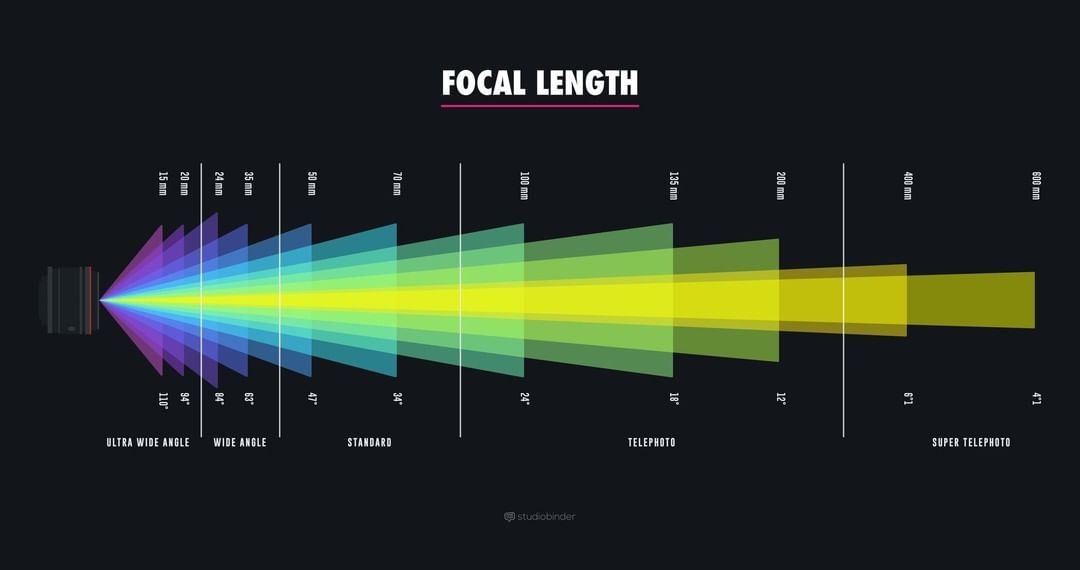
DX and FX Formats Compared
The DX and FX formats use different crops, resulting in different picture angles (and magnifications) with lenses of identical focal lengths.
- Crop
- DX format: high (about 1.5× FX format)
The DX format picture angle for a lens of a given focal length is equivalent to the FX picture angle of a lens with a focal length about 1.5× longer.
- FX format: low
DX and FX Format Cameras
FX format cameras can be identified by the “FX” label on the camera body.
- DX Format Cameras
- No format label on the camera body.
- FX Format Cameras
- FX format cameras bear an “FX” label.
DX and FX Format Lenses
Lenses are available in DX and FX formats.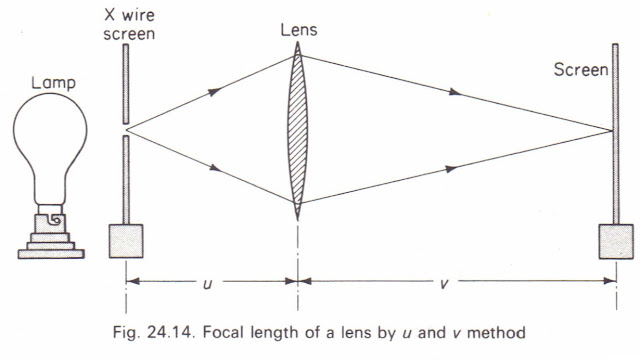 The former are adapted to the DX format crop, while the latter support both DX and FX format crops. DX lenses can be identified by the “DX” label on the barrel.
The former are adapted to the DX format crop, while the latter support both DX and FX format crops. DX lenses can be identified by the “DX” label on the barrel.
- DX Format Lenses
- DX format lenses bear a “DX” label.
- FX Format Lenses
- No format label on the lens.
Focal Length | Understanding Camera Zoom & Lens Focal Length | Nikon
Beginner
Featuring Diane Berkenfeld, Nikon Ambassador Dave Black, Mike Corrado & Lindsay Silverman
Focal length, usually represented in millimeters (mm), is the basic description of a photographic lens.
Glossary
What is Lens Focal Length
Focal length, usually represented in millimeters (mm), is the basic description of a photographic lens. It is not a measurement of the actual length of a lens, but a calculation of an optical distance from the point where light rays converge to form a sharp image of an object to the digital sensor or 35mm film at the focal plane in the camera. The focal length of a lens is determined when the lens is focused at infinity.
The focal length of a lens is determined when the lens is focused at infinity.
Lens focal length tells us the angle of view—how much of the scene will be captured—and the magnification—how large individual elements will be. The longer the focal length, the narrower the angle of view and the higher the magnification. The shorter the focal length, the wider the angle of view and the lower the magnification.
© Dave Black
Zoom vs. Prime Lens
There are two types of lenses-prime and zoom. Prime lenses have a fixed focal length and zoom lenses have variable focal lengths.
Zoom Lens Benefits
The advantage of a zoom lens is versatility. They are ideal when you are photographing a variety of subjects such as landscapes and portraits, and you just want one lens for both situations. Using a zoom lens also reduces the number of times you need to change the lens which saves time and limits the possibility of getting dust in the camera's mirror box or on the sensor.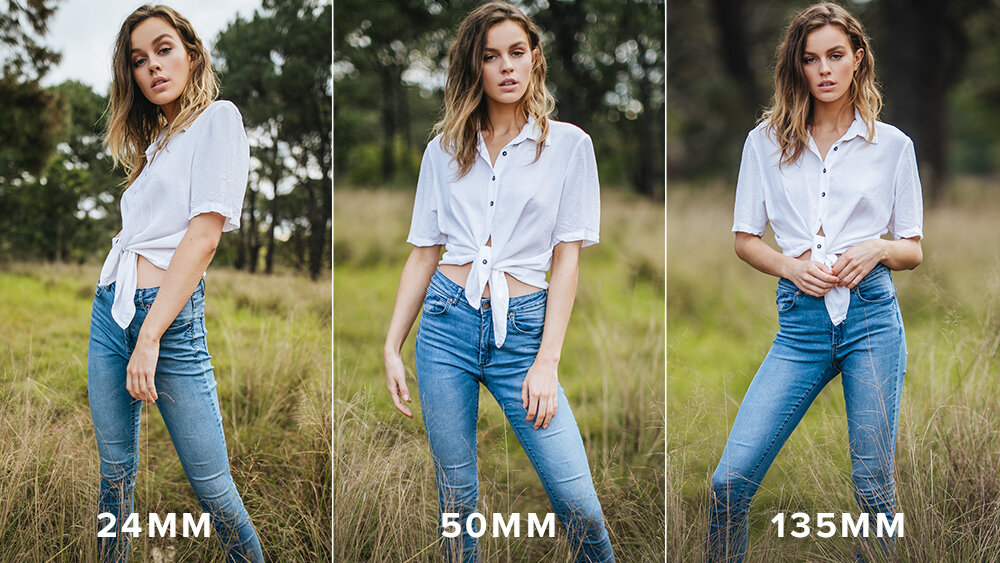
Prime Lens Benefits
The main advantages of prime lenses or fixed focal length lenses are their size and weight as well as their maximum aperture or f/stop. Prime lenses tend to be more compact and lightweight than zoom lenses.
Prime lenses also tend to have a larger maximum aperture (f/1.4 to f/2.8). This is an advantage when shooting in low light conditions as it will increase the possibility of hand holding the camera and freezing the subject without shake or blur caused by the longer exposures. Photographing using prime lenses with large apertures also means you can get a shallow depth of field which is useful for portraiture where you might want a softer or blurred background (also known as bokeh).
Lens Focal Length Comparison
Wide-angle Lens
FX format approx. 14 – 35mm / DX format approx. 10 – 24mm
Wide angle lenses are popular lenses for landscape photography, interiors, large group photos and when working in confined situations.
© Diane Berkenfeld & Lindsay Silverman
Standard Lens
FX format approx.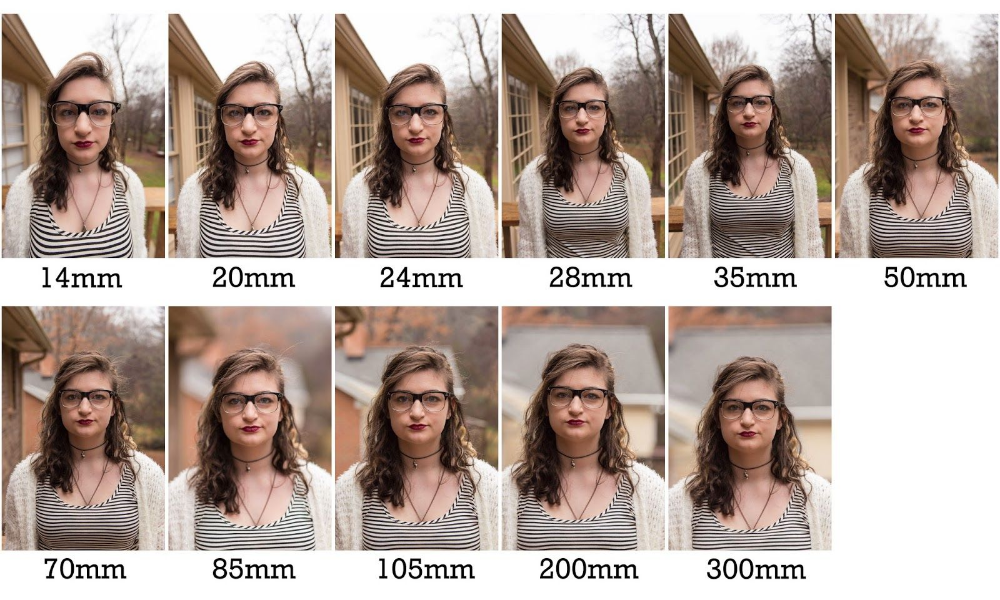 50 – 60mm / DX format approx. 35mm
50 – 60mm / DX format approx. 35mm
Standard lenses are popular as they are closest to the angle of view we humans see. These lenses have minimal distortion, which can be flattering to the subject. They tend to use large apertures and allow a lot of light to enter the lens which makes them fast in low light conditions. Large apertures (f/1.8 – f/1.4) also produce a pleasing out-of-focus effect to the background which concentrates the attention of the viewer on the subject. Standard lenses are the popular choice for a wide range of photography including portraiture, nature and low light situations where the photographer can not use a flash or is looking to capture the scene with available light.
© Lindsay Silverman
Telephoto Lens
FX format approx. 70 – 200mm / DX format approx. 55 – 200mm
Telephoto lenses between 70 – 200mm are very popular lenses for portraiture and product photography as well as nature and wildlife imagery.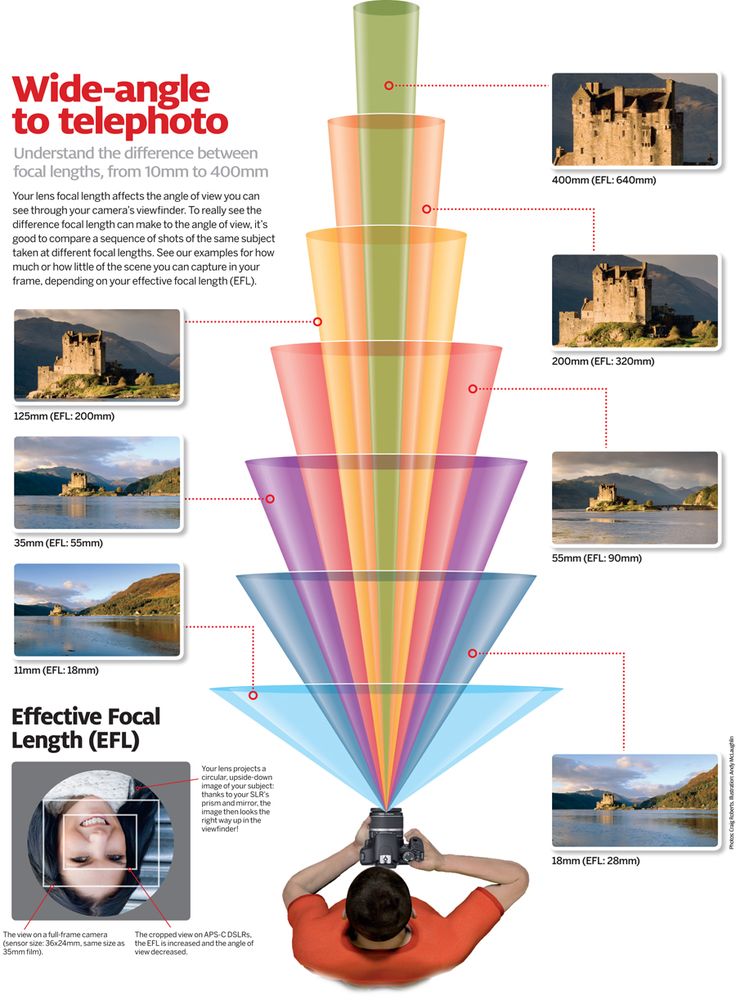 They allow the photographer to produce close crops on the subject. In the case of portraiture a telephoto allows the photographer to take the photo at a distance that does not intrude upon the subject.
They allow the photographer to produce close crops on the subject. In the case of portraiture a telephoto allows the photographer to take the photo at a distance that does not intrude upon the subject.
© Diane Berkenfeld & Mike Corrado
Super Telephoto Lens
FX format approx. 300 – 600mm / DX format approx. 200 – 600mm
These lenses provide a good range for wildlife and sports photography where the photographer is limited as to how close they can get to the subject.
© Lindsay Silverman & Mike Corrado
Macro Lens
FX format 60mm, 105mm, and 200mm / DX format 85mm
Close-up photography uses a specific range of lenses that allow up to 1:1 reproduction. These lenses allow the photographer to focus very close to the subject and reproduce them at a 1:1 life-size ratio on film or an imaging sensor. These lenses are popular for subjects such as flowers, insects and small products.
These lenses are popular for subjects such as flowers, insects and small products.
© Lindsay Silverman
Understanding focal length Watch the video to learn about the focal length of Nikon DSLR lenses.
Field of view of DX format NIKKOR lenses.
Field of view of DX format NIKKOR lenses.
Field of view of FX format NIKKOR lenses.
Field of view of FX format NIKKOR lenses.
Featuring Diane Berkenfeld, Nikon Ambassador Dave Black, Mike Corrado & Lindsay Silverman
This Article Goes Great With These Products
111of0
Lenses: Focal Length and Aperture
Understanding lenses can help you take control of your digital photography. Choosing the right lens for a shooting task can be a complex trade-off between cost, size, weight, focus speed and image quality. This chapter aims to improve your understanding of this choice by providing an initial overview of the concepts of image quality, focal length, perspective, prime and zoom lenses, and aperture or f-number.
Lens elements and image quality
All but the simplest cameras are equipped with lenses that consist of several "optical elements". Each of these elements helps to direct the beam of light in such a way as to recreate the image on the digital sensor as accurately as possible. The goal is to minimize aberrations while using the fewest, least expensive elements.
Optical aberrations occur when scene elements do not translate into similar image elements after passing through the lens, causing image blur, reduced contrast, or color mismatch (chromatic aberration). Lenses may also suffer from imbalance, circular blackout (vignetting), or perspective distortion. Hover over each of the options below to see how these defects affect image quality in extreme cases.
| Original image | Loss of contrast | Blur |
| Chromatic aberration | Perspective distortion | |
| Vignetting | Original | |
Each of these problems is present to some extent in any lens.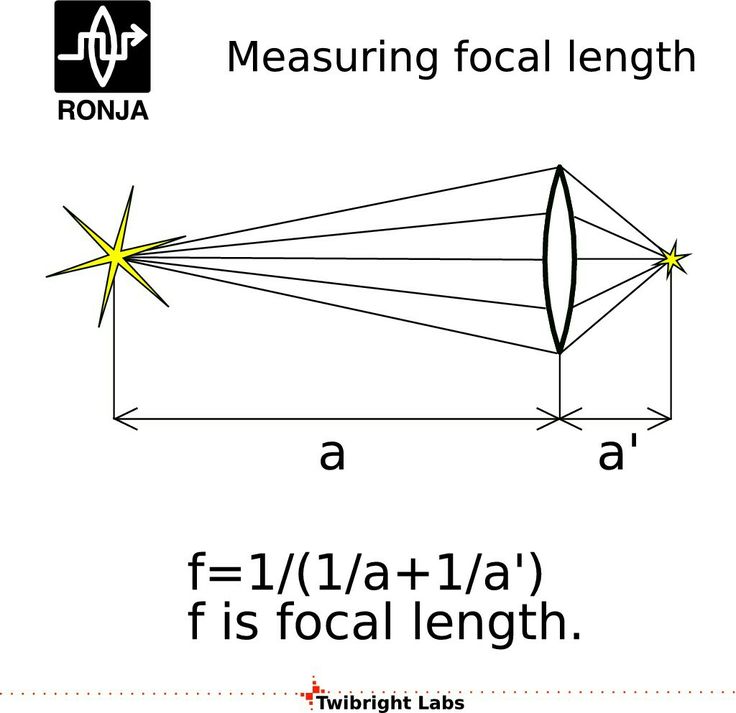 Later in this chapter, when a lens is mentioned as having poorer optical quality than another lens, it means some combination of the above defects . Some of these imperfections may be less objectionable than others, depending on the subject.
Later in this chapter, when a lens is mentioned as having poorer optical quality than another lens, it means some combination of the above defects . Some of these imperfections may be less objectionable than others, depending on the subject.
Influence of the lens focal length
The focal length of the lens determines its angle of view and at the same time the degree of magnification of the subject at a given point of view. Wide-angle lenses have short focal lengths, while telephoto lenses have significant focal lengths.
Note: The point of intersection of the light rays is not necessarily equivalent to the focal length as shown above, but the distance is approximately proportional. Thus, increasing the focal length does result in a reduction in the angle of view, as drawn.
| Required focal length calculator | ||
|---|---|---|
| Object distance: | meter(s) feet(s) inches | |
| Item size: | meter(s) feet(s) inches | |
| Camera type: | digital 1.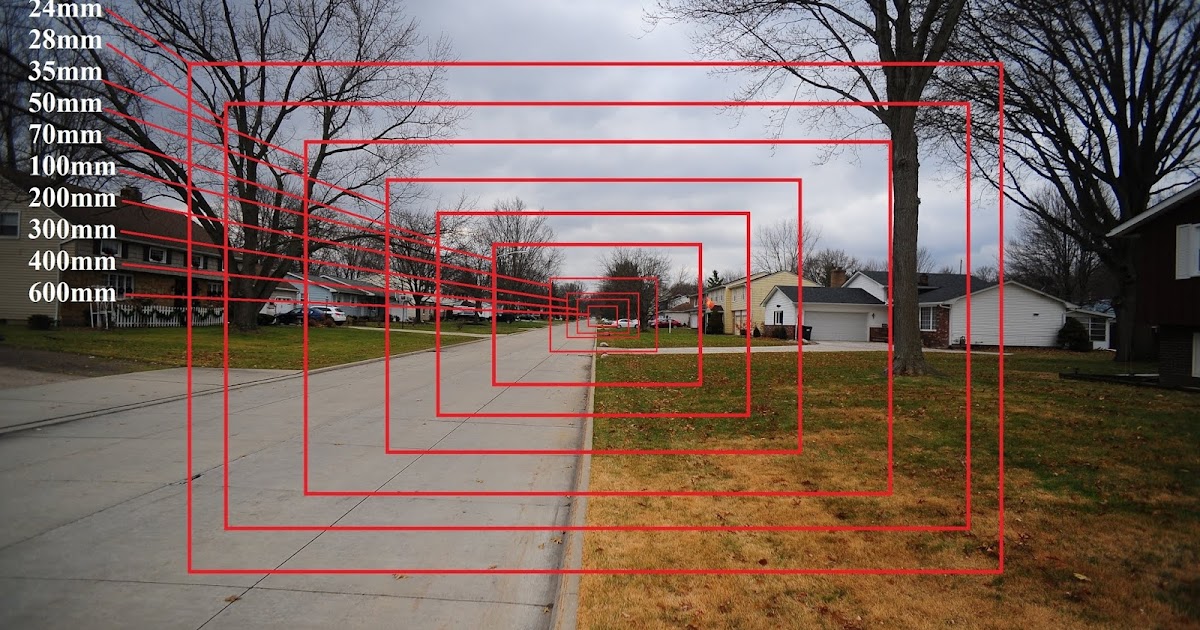 6 crop factor 1.5 digital crop factor 1.3 digital crop factor digital compact with 1/3" sensor digital compact with 1/2.5" sensor digital compact with 1/1.8" sensor digital compact with 1/1.7 sensor "digital compact with 2/3 sensor"digital with 4/3" sensor 35 mmAPS-C6x4.5 cm6x6 cm6x7 cm5x4 inch10x8 inch 6 crop factor 1.5 digital crop factor 1.3 digital crop factor digital compact with 1/3" sensor digital compact with 1/2.5" sensor digital compact with 1/1.8" sensor digital compact with 1/1.7 sensor "digital compact with 2/3 sensor"digital with 4/3" sensor 35 mmAPS-C6x4.5 cm6x6 cm6x7 cm5x4 inch10x8 inch | |
| Normal focal length: | ||
Note: The calculator assumes that the maximum subject size
corresponds to the maximum side of the camera frame.
The calculator is not intended for use in extreme macro photography, however
takes into account small changes in angle of view due to focal length.
Many will say that the focal length also determines the perspective of the image, but strictly speaking, the perspective changes only with the change in the position of the photographer relative to the subject. If you try to shoot the same subject with a wide angle and a telephoto lens, the perspective will indeed change as the photographer will have to move closer to or further away from the subject.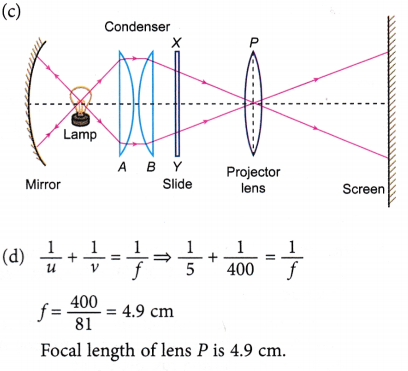 Only in these cases, a wide-angle lens will exaggerate or stretch the perspective, while a telephoto lens will compress or smooth it.
Only in these cases, a wide-angle lens will exaggerate or stretch the perspective, while a telephoto lens will compress or smooth it.
Perspective control can be a powerful compositional tool in photography and often determines the choice of focal length (if there is a possibility of shooting from any position). Hover over the above image to see the perspective shift due to the wide angle. Note that the subjects in the frame remain nearly identical and thus require a closer position for the wide-angle lens. The relative sizes of the objects change so much that the distant door becomes smaller relative to the lamps in the foreground.
The following table provides information about what focal lengths are required for a lens to be considered a wide-angle or telephoto lens, as well as their typical applications. Please note that are only approximate focal length ranges of , and actual usage may vary accordingly; many, for example, use telephoto lenses when shooting extended landscapes to compress perspective.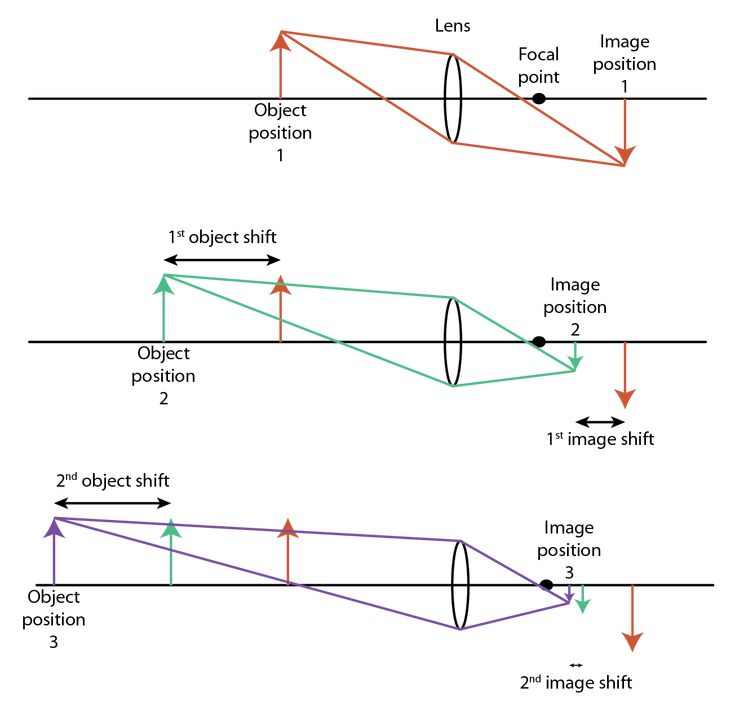
| Focal length * | Group | Typical application |
|---|---|---|
| Less than 21 mm | ultra wide | architecture |
| 21-35 mm | wide angle | landscape |
| 35-70 mm | normal | street and documentary photography |
| 70-135 mm | close telephoto lenses | portraits |
| 135-300+ mm | telephoto lenses | sports, birds and wildlife |
*Note: Lens focal lengths are valid for cameras where sensor size is equivalent to 35mm film . If you are using a compact or budget DSLR, the
most likely has a different sensor size. To correct these figures for your camera,
use the focal length converter in the chapter on digital camera sensor sizes.
Other factors may also depend on the focal length of the lens. Telephoto lenses are more sensitive to camera shake, as minimal hand movement results in significant image shift, as can be seen by holding binoculars at close range with trembling hands.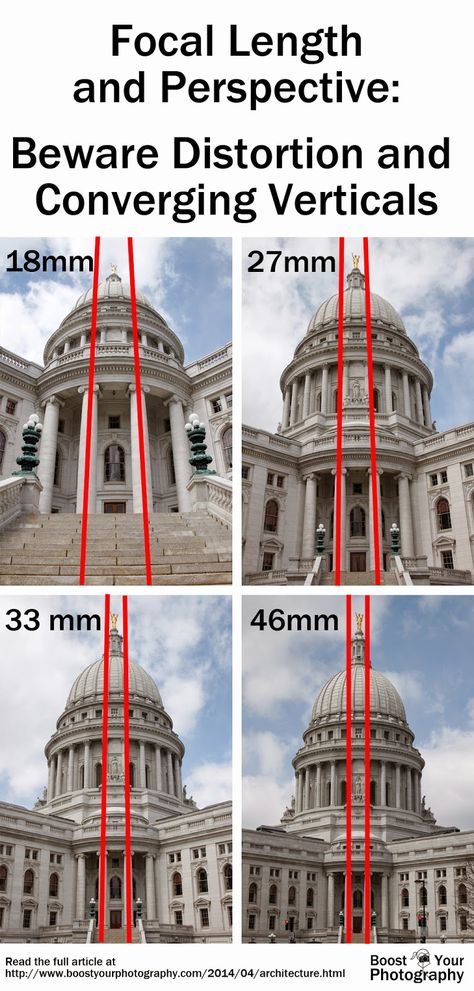 Wide-angle lenses generally have less glare, in part because they were designed to take into account that the sun is more likely to enter the frame at wide angles. Finally, near telephoto lenses usually provide the best optical quality at a similar price.
Wide-angle lenses generally have less glare, in part because they were designed to take into account that the sun is more likely to enter the frame at wide angles. Finally, near telephoto lenses usually provide the best optical quality at a similar price.
Focal length and handheld shooting
The focal length of a lens can also make a big difference in how easy it is to get a sharp handheld shot. Increasing the focal length requires a shorter exposure time to minimize blur caused by hand-shake. Imagine what it's like to hold a laser pointer motionless: on a nearby object, its beam jumps noticeably less than on a distant one.
This is because the lightest circular vibrations increase significantly with distance, whereas if the vibrations were only horizontal or only vertical, the distance from the laser to the object would be maintained.
A generally accepted practical method for determining the required shutter speed for a given focal length is to divide units by the focal length.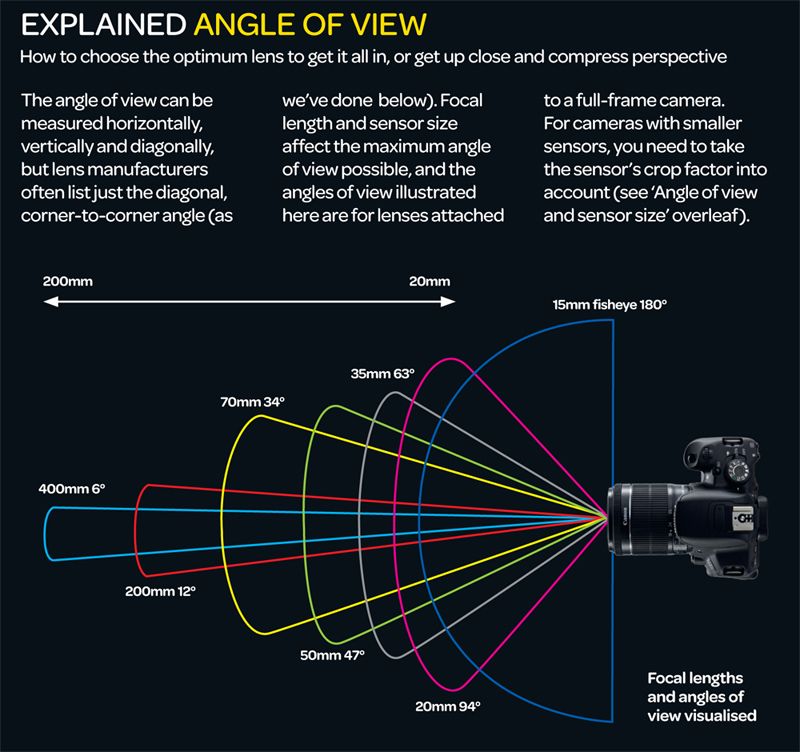 This means that for a 35 mm camera, the exposure time should be no more than one divided by the focal length, a fraction of a second. In other words, when using a 200mm focal length on a 35mm camera, the shutter speed should be no faster than 1/200th of a second, otherwise it will be difficult to avoid blur. Keep in mind that this is an extremely approximate rule, someone will be able to hold the frame much longer or, conversely, less. Owners of digital cameras with a smaller sensor will have to calculate the effective (true) focal length, taking into account the frame size.
This means that for a 35 mm camera, the exposure time should be no more than one divided by the focal length, a fraction of a second. In other words, when using a 200mm focal length on a 35mm camera, the shutter speed should be no faster than 1/200th of a second, otherwise it will be difficult to avoid blur. Keep in mind that this is an extremely approximate rule, someone will be able to hold the frame much longer or, conversely, less. Owners of digital cameras with a smaller sensor will have to calculate the effective (true) focal length, taking into account the frame size.
Vario lenses (zooms) and simple lenses (fixes)
A zoom lens is one whose focal length can vary within specified limits, while in "simple" or fixed lenses it is unchanged. The main advantage of a zoom lens is the ease of achieving a variety of compositions or perspectives (because there is no need to change lenses). This advantage is often critical for dynamic shooting, for example, in photojournalism and children's photography.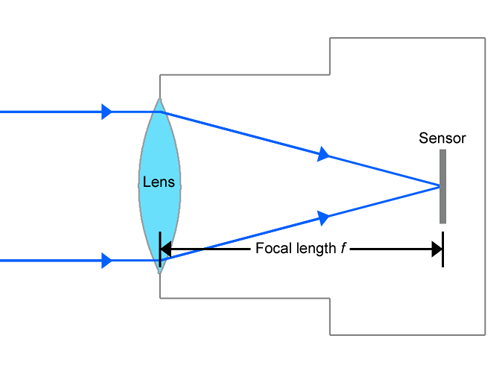
Don't forget that zooming does not necessarily mean that you don't need to move anymore ; zooms just increase flexibility. The example below shows the starting position as well as two options for using a zoom lens. If a simple lens were used, recomposing would not be possible without cropping the image (if it was necessary to zoom in on the composition). Similar to the example in the previous section, the change in perspective was achieved by shortening the focal length and moving closer to the subject. To get the opposite change in perspective, one would have to increase the focal length and move further away from the subject.
| Two zoom options: | |
| Recomposition | Perspective change |
Why deliberately limit yourself by using a simple lens? Simple lenses have existed long before the advent of zoom lenses and still have many advantages over their more modern counterparts.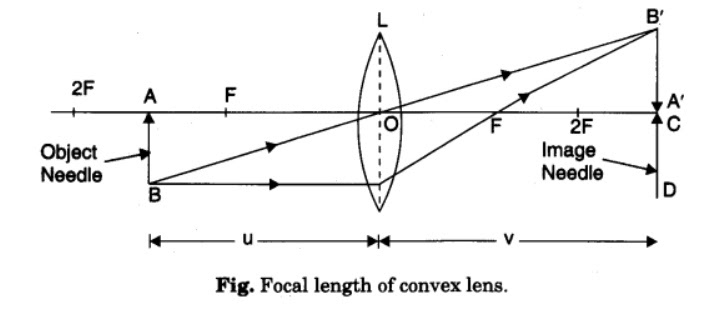 When zooms first hit the market, using them meant sacrificing a lot of optical quality. However, more modern, high-quality zoom lenses generally do not cause noticeable deterioration in image quality, unless peering with a trained eye (or printing a very large print).
When zooms first hit the market, using them meant sacrificing a lot of optical quality. However, more modern, high-quality zoom lenses generally do not cause noticeable deterioration in image quality, unless peering with a trained eye (or printing a very large print).
The main advantages of simple lenses are cost, weight and speed (aperture). Inexpensive prime lenses can generally provide as good (if not better) image quality than expensive zoom lenses. Also, if we consider a zoom with a short range of focal lengths, a simple lens with a similar focal length will be significantly smaller and lighter. Finally, the best prime lenses almost always provide better aperture (maximum aperture) than the best zooms - which can sometimes be critical for shooting sports or theater in low light conditions where a shallow depth of field is needed.
For compact digital cameras, lenses marked with 3x, 4x, etc. zoom, this number indicates the range between the smallest and largest focal lengths.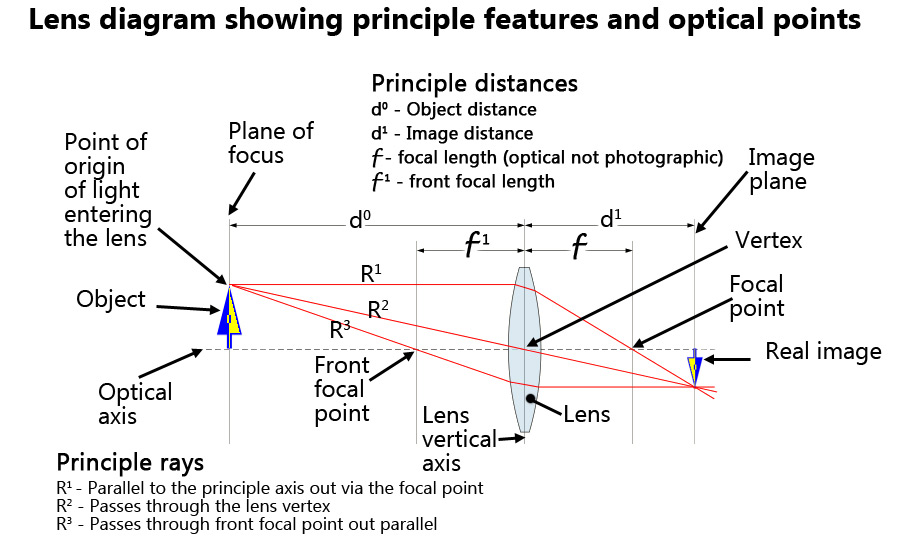 So a higher number doesn't necessarily mean the image can be zoomed in more (because that zoom might just have a wider angle at the minimum focal length). In addition, digital zoom is not the same as optical zoom, since it achieves image enlargement through interpolation. Read the fine print to make sure you are not being misled.
So a higher number doesn't necessarily mean the image can be zoomed in more (because that zoom might just have a wider angle at the minimum focal length). In addition, digital zoom is not the same as optical zoom, since it achieves image enlargement through interpolation. Read the fine print to make sure you are not being misled.
Aperture effect or f-number
A lens aperture range refers to the degree to which the lens can be opened or closed to let in more or less light, respectively. Apertures are specified in terms of f-numbers, which quantify the relative light transmission area (shown below).
Note: This comparison is approximate: aperture blades rarely form a perfect circle
as the aperture usually consists of 5-8 blades.
Note that the larger the light transmission area, the smaller the f-number (this is often confusing). The two terms are often erroneously used interchangeably. The rest of this article treats lenses as apertures. Lenses with wider apertures are often referred to as "faster" lenses, because at the same ISO speed, faster shutter speeds can be used for the same exposure.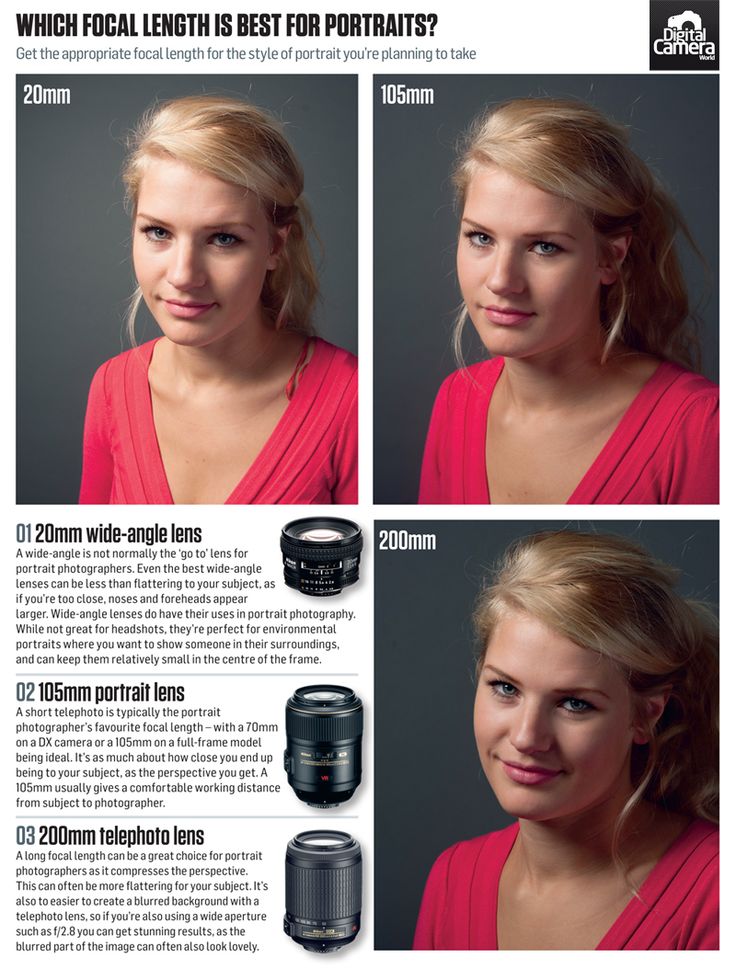 Also, a smaller aperture means that objects can stay in focus over a larger range of distances, a concept described by the term "depth of field".
Also, a smaller aperture means that objects can stay in focus over a larger range of distances, a concept described by the term "depth of field".
| number f | influence on survey parameters: | |||
|---|---|---|---|---|
| Light transmission area (aperture size) | Extract | Depth of field | ||
| More than | Less than | Longer | Wider | |
| Less than | More than | Short | Already | |
When buying lenses, look at the specifications for the maximum (and sometimes minimum) possible aperture. Lenses with a large aperture range provide greater flexibility in both possible shutter speed and depth of field. The maximum aperture is probably the most important lens specification and is often listed on the box along with the focal length.
The f-number can also be written as 1:X (instead of f/X), as on the Canon 70-200 f/2.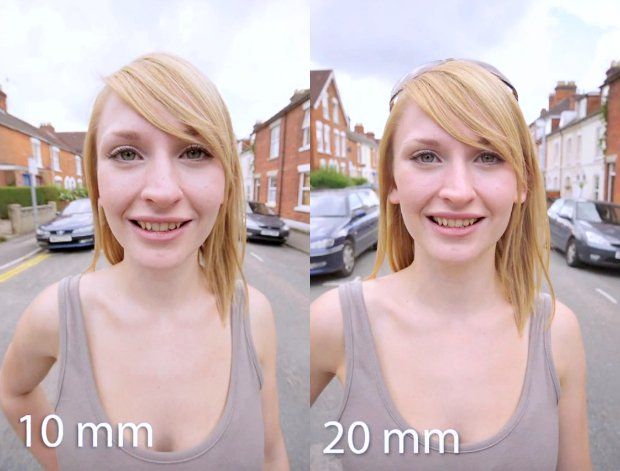 8 lens (its box is shown above and says f/2.8).
8 lens (its box is shown above and says f/2.8).
Shooting portraits, theater or sports often requires the lens to be as wide as possible to achieve fast shutter speeds or shallow depth of field, respectively. The shallow depth of field in portrait photography helps to separate the subject from the background. For digital cameras lenses with a larger aperture provide a much brighter image in the viewfinder, which can be critical for shooting at night and in low light conditions. They often also provide the with faster, more accurate autofocus on the in low light. Manual focusing is also simplified because the viewfinder image has a shallower depth of field (thus it is easier to see when the subject is in focus).
| Typical maximum apertures | Relative aperture | Typical lenses |
|---|---|---|
| f/1.0 | 32x | Best available prime lenses (consumer) |
f/1.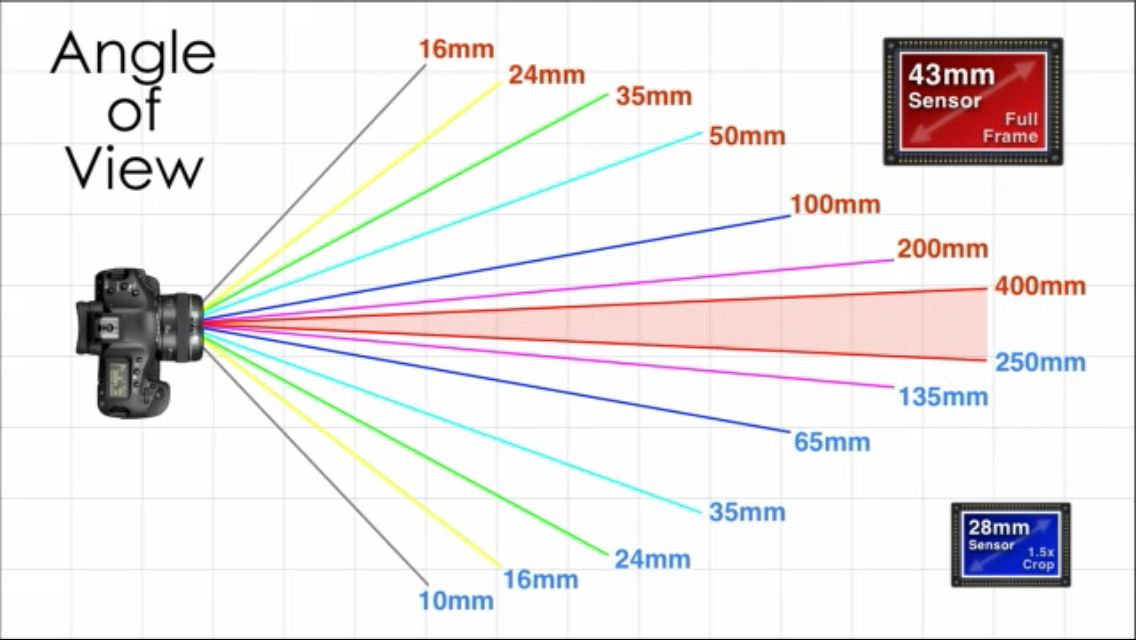 4 4 | 16x | Good simple lenses |
| f/2.0 | 8x | |
| f/2.8 | 4x | Best zoom lenses (fixed aperture) |
| f/4.0 | 2x | Light zoom or super telephoto |
| f/5.6 | 1x |
Lens minimum apertures are usually not nearly as important as maximum apertures. They are rarely used due to blurring of the image due to diffraction, and also because they can require impossibly slow shutter speeds. In cases where extreme depth of field is needed, lenses with a smaller maximum aperture (larger f-number) can be used.
Finally, some zooms on DSLRs and compact digital cameras often indicate a range of maximum apertures, since the aperture value can vary depending on the focal length. These f-stop ranges only define the maximum possible f-stops, not the full range. For example, f/2.0-3.0 means that the maximum possible aperture gradually decreases from f/2.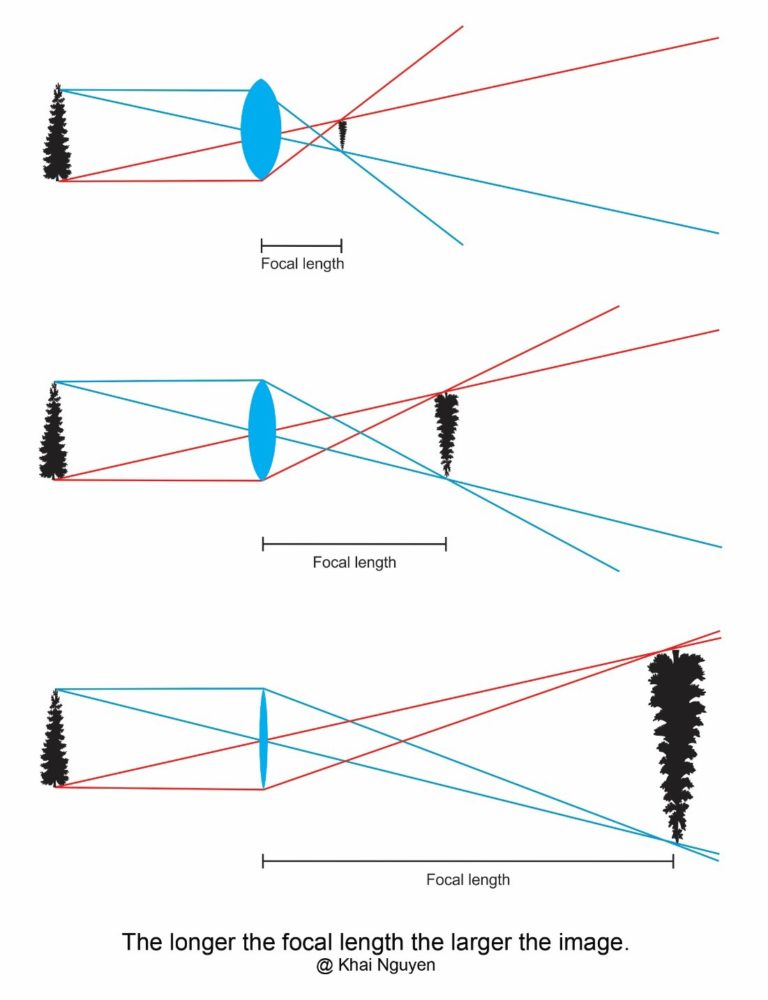 0 (at the widest angle) to f/3.0 (at the maximum focal length). The main advantage of a zoom lens with a constant maximum aperture is that exposure settings are more predictable regardless of focal length.
0 (at the widest angle) to f/3.0 (at the maximum focal length). The main advantage of a zoom lens with a constant maximum aperture is that exposure settings are more predictable regardless of focal length.
Also note that even if the maximum aperture of a lens cannot be used, this does not necessarily mean that the lens is not needed. Lens aberrations are generally less when using an exposure one or two f-stops below maximum aperture (for example, when using f/4.0 on a lens with a maximum aperture of f/2.0). That could mean that for photography at f/2.8, a lens with f/2.0 or f/1.4 can achieve better quality than a lens with a maximum aperture of f/2.8.
Other considerations include price, size and weight. Lenses with large maximum apertures are usually much heavier, larger and more expensive. Size and weight can be critical for wildlife photography, hiking and travel, as equipment is subject to long hauls.
Focal length, angle of view and perspective in photography
LENS BASIC INFORMATION
Focal length
Focal length
The focal length or focal length range of a zoom lens is usually the most important feature to consider when choosing specific photographic purposes or genres of shooting. The focal length of a lens determines two critical characteristics: the magnification factor and the angle of view.
The focal length of a lens determines two critical characteristics: the magnification factor and the angle of view.
The longer the focal length, the greater the magnification, and vice versa. Wide-angle lenses with a short focal length give little magnification. This means that you have to physically move closer to a medium-sized object in order to fill the frame with it. It also means that large objects will also fit into the frame, and in order to photograph them, you do not need to step back from the subject. Long focal length telephoto lenses give you high magnification, so you can fill the frame with objects that are far from the camera.
[1] Rear (second) main point of the lens [2] Focal length [3] Angle of view (measured diagonally) [4] Focal plane (sensor plane)
Technical definition of focal length
The focal length of a lens is defined as the distance from the back principal point to the back focus when the focus is at infinity. The back main point is one of the six "cardinal points" that are used as characteristics of an optical system (front and back focus, front and back anchor points, and front and back main points).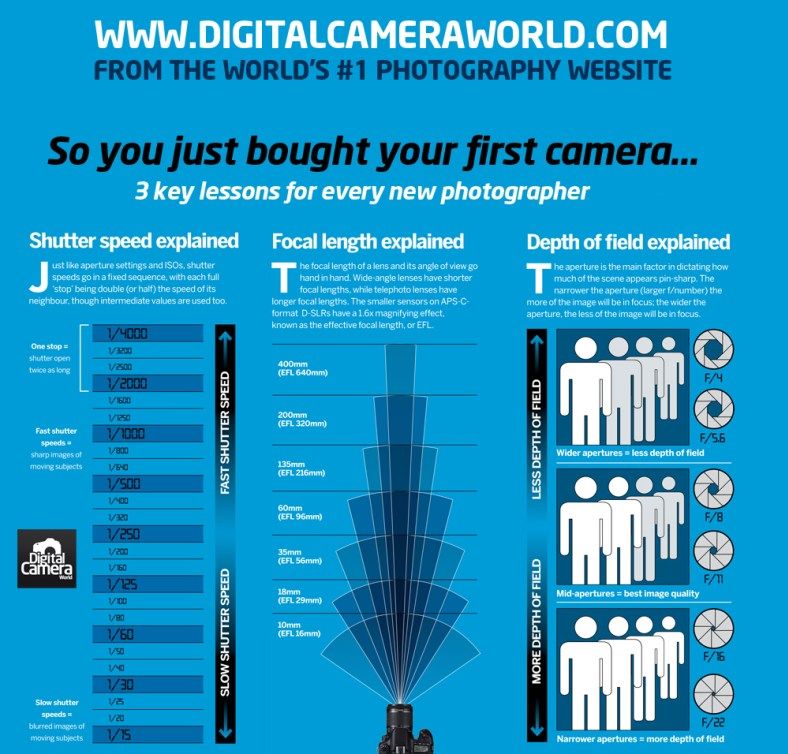 The rear principal point can be anywhere: inside the lens or outside depending on the optical design. Therefore, it is not so easy to accurately measure the focal length of the lens on your own.
The rear principal point can be anywhere: inside the lens or outside depending on the optical design. Therefore, it is not so easy to accurately measure the focal length of the lens on your own.
Focal length and angle of view
Angle of view is that part of the scene in front of the camera that will hit the sensor and become an image. In accordance with a more scientific definition, this is the angular size of the plot falling on the matrix, measured diagonally. It is important to remember that the angle of view depends on the focal length of the lens and the format of the camera's matrix. Therefore, the angle of view of a particular lens on a 35mm full-frame camera and an APS-C sensor camera will be different. Different lenses with the same focal length will always have the same angle of view when used on cameras with the same sensor format.
Comparison of focal length and angle of view in the figure illustrates the relationship between full-frame 35mm and APS-C format cameras.